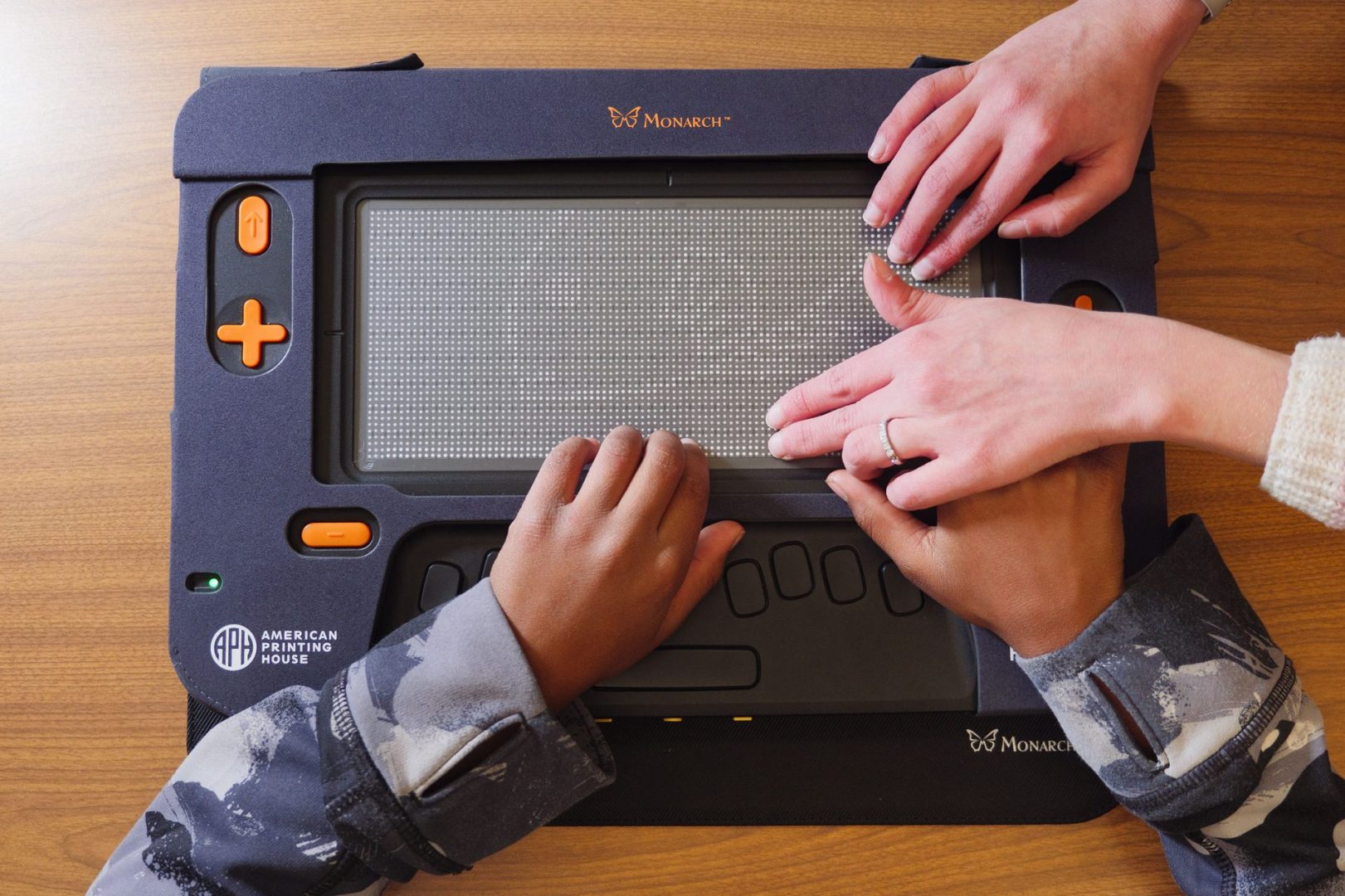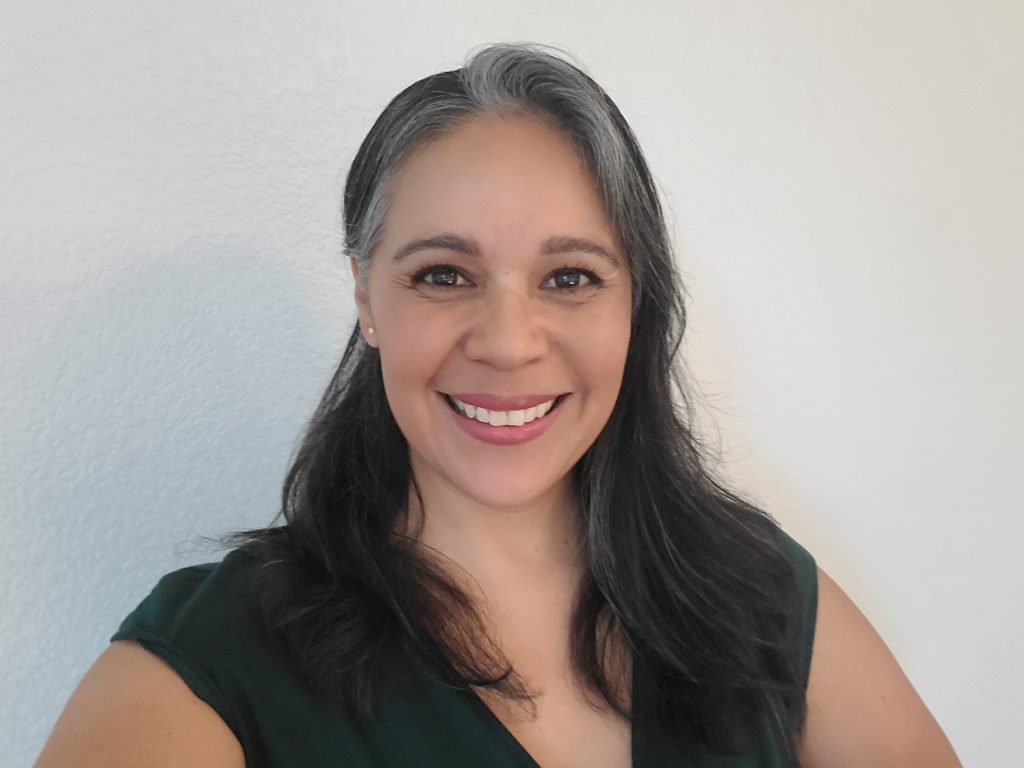Enhancing Early Educational Experiences with the Monarch

Imagine opening the classroom door on your very first day of school, the excitement of meeting new friends and learning new things pumping through your veins. Literacy and exploration are key components of preschool and kindergarten curriculums. By rendering braille and tactile graphics on the same surface, APH’s Monarch helps students who are blind or low vision learn and discover the same images as their sighted peers.
Lori Cole, teacher supervisor of the braille and adaptive technology department at the Arkansas School for the Blind and Visually Impaired, uses the Monarch to supplement class instruction. when learning letter phonics. Opening the Tactile Graphic Image Library (TGIL) through the Monarch’s tactile viewer app Lori presents students with various pictures, such as an apple for the letter A. Other exercises help students learn to connect pictures to real-world objects. For example, when they are learning about fish, Lori will pull up a graphic of a fish on the Monarch and show it to students along with a stuffed fish, so they understand these representations are one and the same. “If you go to any preschool, they’re learning through pictures,” Lori said. “I think the Monarch is helping to make that connection at a younger age and students are gaining those tactile graphics skills that we haven’t always addressed. Before the Monarch, we’ve always used real world examples.” Now, tactile graphics are at the students’ fingertips. Lori remembers having her younger learners put a dollar bill under a CCTV and zoom in on it so they could see the money. Today, she can google, “Dollar bill coloring sheet,” save that image as a PDF, put it on a flash drive, and open it on the Monarch for students to feel and see tactilely.
Using the Monarch for braille instruction, Lori creates tracking worksheets on the word processor and asks students to search for a full cell or a certain letter of the alphabet within each line of braille symbols. They also practice the concept of long vs. short by comparing the lengths of the lines. “To be able to feel the lines on something that’s electronic and notice how it moves gains the students attention more. They love it.” As they advance in their braille skills, Lori will put a story or poem on the Monarch and have each pupil practice reading a line before they move on to the next peer. During the activity, Lori adjusts the braille line spacing according to each reader’s preference, helping them to better discern the braille characters. This exercise also teaches young learners the concept of sharing as the Monarch moves from student to student.
“If not given the correct opportunities, students can get behind quickly,” Lori said. “Having instant access to pictures and the ability to change out worksheets saves time, benefiting the whole classroom and allowing the student to learn alongside their sighted peers. The Monarch gives students another tool and access to materials they wouldn’t have otherwise.”
Join our Monarch waitlist so you can utilize this revolutionary device in your classroom.
Share this article.
Related articles

Meet APH Scholar Patricia Gallardo
Meet APH Scholar Patricia Gallardo Patricia Gallardo joined the Child Development program at Braille Institute in 2018, and in 2022...
